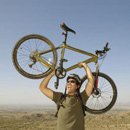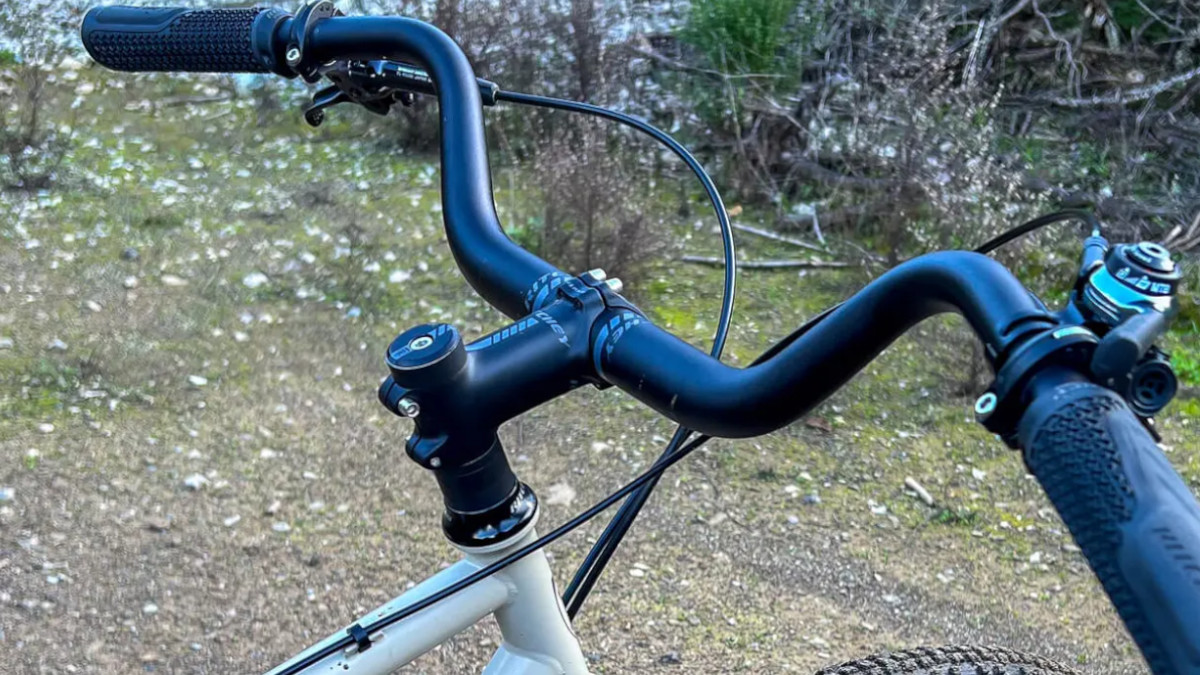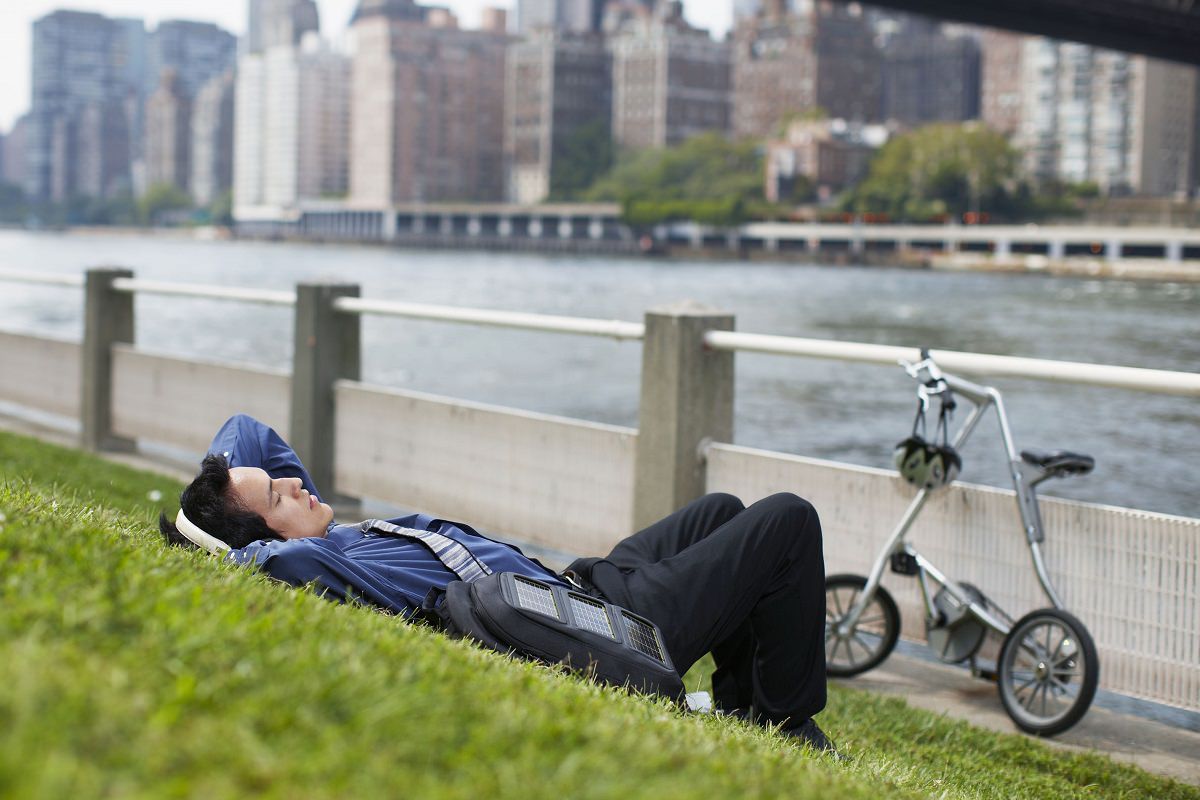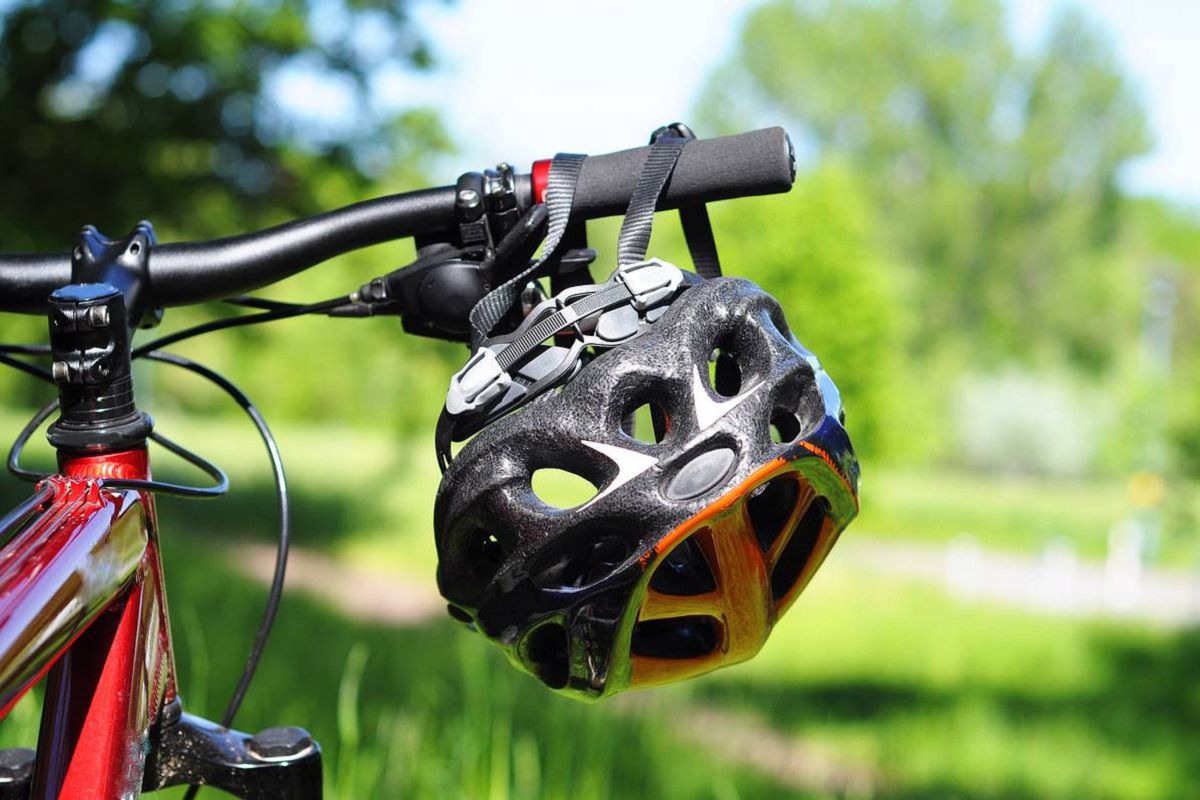A bike rack is supposed to give your bicycle a trusted foundation. But when it wobbles, it feels like a wild horse that is bucking you off! There can be many reasons like Looseness In The Hitch Receiver, or a Play In The Bike Rack Itself (Journal of Vehicle System Dynamic-2017) why your rack wobbles but here’s the good part, you won’t even need to visit a bike shop to get your issue fixed! Most of these problems have an easy solution.
In 2019, I read a study in the National Association of City Transportation Officials (NACTO) that proved 22% Of People Using Bike Racks Experienced Their Bike Racks Wobbling. Sounds surprising doesn’t it? Well, you don’t have to be one of those people because today we will discuss the most common causes along with easy solutions to address your wobbling bike rack.
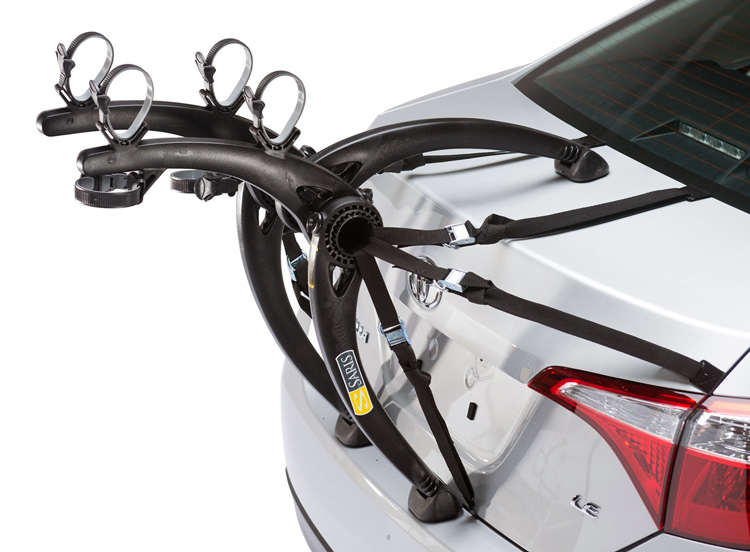
Types Of Wobbling Bike Racks
There are many categories of bike racks like crossbars, fixed-point roof racks, flush or bare roofs, raised side rails, etc. But for general understanding, you can say that there are three common types of bike racks.
| Rack Type | Usage | Common Issues |
|---|---|---|
| Roof Mounted Bike Rack | Mounted on the roof of the vehicle. Versatile and ideal for various items. High cargo capacity. |
|
| Hitch-Mounted Bike Racks | Hitch racks are attached to the hitch receiver at the rear of the vehicle. Offers stability and ease of use. |
|
| Trunk Rack | Attached to the rear of the vehicle. Suitable for lightweight items. |
|
Wobbling Bike Rack- 8 Causes and Easy Fixes
So why does a bike rack wobble? It is possible that you have an Uneven Weight Distribution or you are just driving on a very Bumpy Road!
Most bicycle racks have a built-in mechanism to stop wobble, especially hitch-mounted racks. However, if yours doesn’t have one, here is what you should be looking for.
1. Your Bike Rack Is Not Compatible With Your Vehicle
This issue arises when the hitch adapter or your bike rack itself is not compatible with the vehicle’s ground clearance or hitch size. Only the right bike rack for your specified vehicle will deliver a secure fit.
Solution
You will find a section on the website of the bike rack manufacturer where you can enter the vehicle’s hitch size and vehicle type. This will help you find a compatible bike rack. Or you can contact the manufacturer and ask them for the compatibility of their bike rack with your vehicle.
If you are looking for easy-to-use bike racks, look no further than your car’s trunk. That’s right! Just open it, pop in your bicycle and you are good to go. But for those ready to take on challenges, check out these options for your SUV.
2. Your Bike Rack Is Not Properly Installed
An improperly installed bike rack can lead to a lot of wobbling. You have either not securely attached your bike rack to the hitch receiver. This is most common with a hitch-mounted bike rack. It is also possible that the bolts that hold the bike rack in place are not properly tightened according to the manufacturer’s instructions. This poses a safety threat because a wobbly bike rack cannot secure the bike properly.
Solution
Tighten all the bolts according to the manufacturer’s specifications. You can use a hitch-tightener or a hitch clamp. Make sure that you properly attach the bike rack to the hitch receiver. I recommend using a torque wrench and tightening all the bolts according to the specified torque.
Tip: Check your bike rack installation at regular intervals to make sure that all the bolts are tight.
3. Your Bike Rack Is Not Properly Balanced
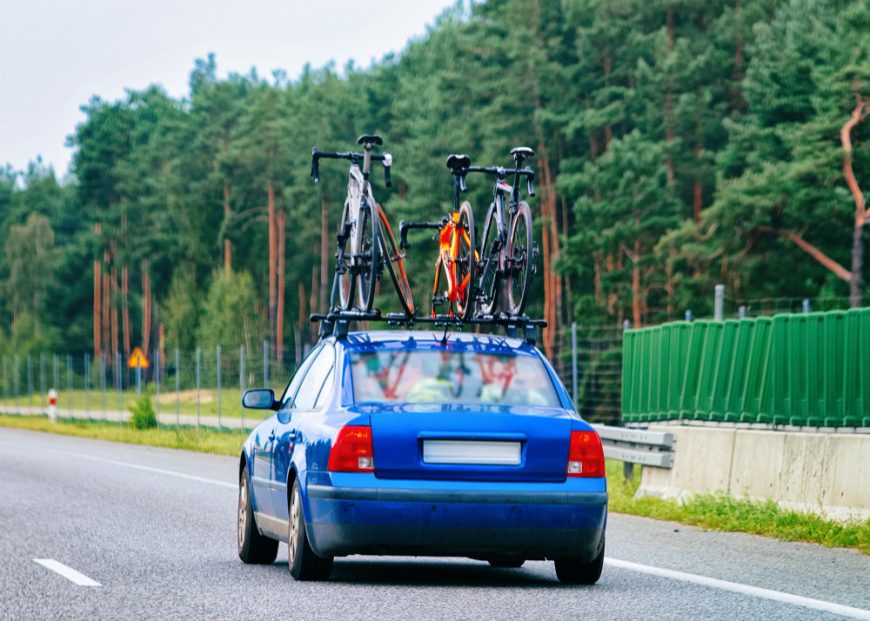
A balanced bike rack is very important for stability. When your bike weight is not properly distributed, it results in wobbling. This problem is more common when you load an odd number of bikes on the rack. I always place the heaviest bike in the middle of the rack. This helps improve the balance of my bike rack and results in less wobbling.
Solution
The solution here is simply not exceeding the bike rack’s weight capacity. You can also follow my method of placing the heaviest bike in the middle so that the weight is evenly distributed. Always check your rack’s weight limit before loading multiple bikes.
DIY Hack: Whenever I have to carry multiple bikes, I use a bike rack stabilizer. I have a MOR/RYDE MORryde SP54-182- Hitch Stabilizer for this purpose. It provides the extra needed support which helps reduce wobbling.
4. You Have Overloaded Your Bike Rack
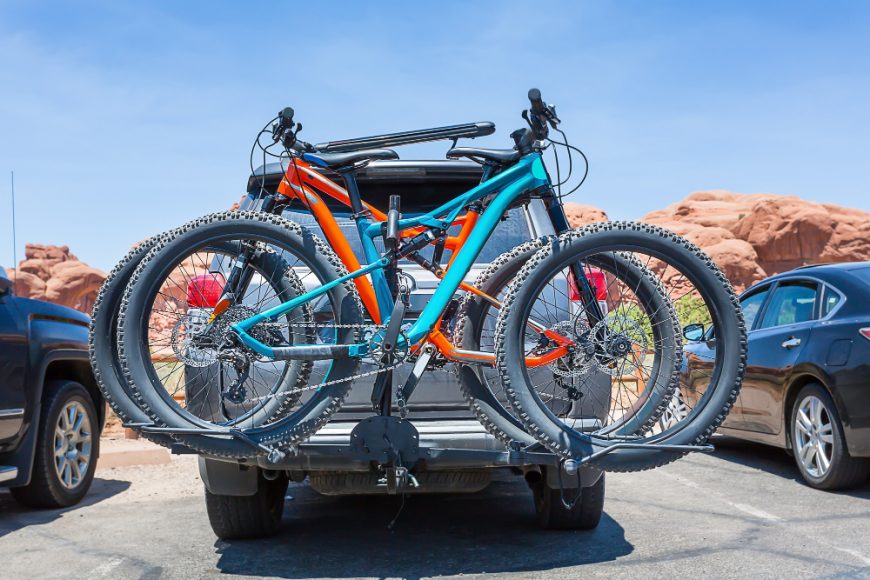
You have placed too many bikes on your bike rack which now is carrying weight more than its limit! This is another reason which causes your bike to wobble. All bike racks have different weight limits. You can carry up to four bikes or two, it all depends on your rack.
The most common weight limit for trunk-mounted and hitch-mounted bike racks is 35 pounds per bike. Exceeding the weight limit is dangerous especially while driving on unpaved roads and on high speeds. Overloading a bike rack leads to premature fails!
Solution
If you have to carry more bikes, it is better to use a bike rack stabilizer. A stabilizer will provide support to your rack and reduce the wobbling.
Maximize your storage space with our bike storage ideas!
5. Your Bike Rack Is Damaged
Your bike rack can be damaged for many reasons. There may be cracks, bent components, or any weakened materials due to wear and tear or accidents. These components can weaken the structural integrity of your bike rack. When this happens, your bike rack will wobble and become unsafe to use.
Solution
Look for any cracks, bends, loose bolts, or any other signs of damage. You can weld the cracks but if there is significant damage, you will have to replace the bike rack. Also, check the straps or the bungee cords for any visible damage.
Upgrade your bike transportation with our top-rated bike racks!
6. The Hitch Adapter Is Not Compatible With The Bike Rack
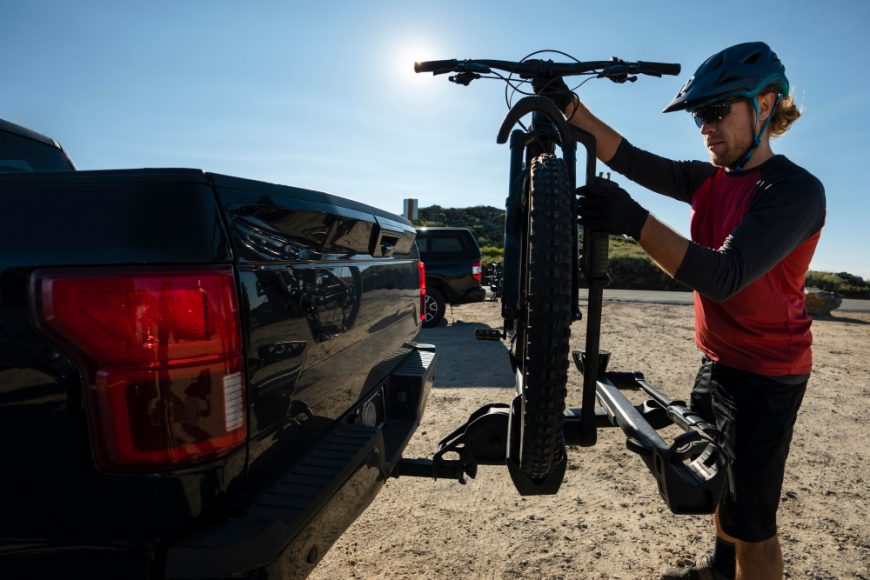
Hitch adapters are required to connect the bike rack with the hitch receiver of the vehicle. When the adapter is not properly installed or it is not compatible with the bike rack, your bike rack will wobble.
Solution
It is very important that you use the compatible hitch adapter with your bike rack. Always choose an adapter that is designed according to your vehicle’s hitch size and the specific bike rack that you are using. You can refer to the bike rack owner’s manual for hitch sizes and models that are compatible with the adapter.
Mostly you will find this sort of information on the website of the hitch adapter manufacturer. You can enter your vehicle’s hitch size and bike rack model to find a compatible adapter. If this does not work, you can contact the manufacturer of the hitch adapter or the bike rack to know if the products are compatible.
Save space and keep your bikes safe with our guide to hanging bikes!
7. Your Bike Rack Is Old
A study published in the journal Transportation Research Part F: Traffic Psychology and Behaviour in 2020 shows that bike racks are more likely to fail when they are old and damaged. In 2015, the journal Applied Mechanics and Materials published a study that proved that bike racks made using certain materials, for example, aluminum, are more likely to erode.
When this happens, your bike loses the strength it requires to firmly hold your bike. It becomes less stable and as a result, you will experience wobbling.
Solution
Try to lubricate your bike rack frequently to avoid any corrosion. When you are not using your bike rack, store it in a dry and cool place. When I have to use it in extreme temperatures, I try to make sure that my bike rack is properly covered.
If your bike rack is old, it is time for an upgrade. Try to invest in a durable material bike rack like steel and aluminum. They are prone to rust but plastic bike racks are not as durable as these racks. My suggestion would be to be mindful of the joints. They should be welded properly with thick tubing. I typically opt for bike racks that have a weight capacity greater than my bikes and gears.
Looking for an upgrade? These Best Roof Racks For Mountain Bikes are the top options that you must check out.
8. The Pin And Lock Mechanism Is Not Properly Tightened
The pin and lock mechanism secures the bike rack with the hitch receiver. When you do not tighten this mechanism properly, it results in wobbling. It is also possible that your pin and lock mechanism has worn out. This can also cause it to become loose.
Solution
Regularly inspect your pin and lock mechanism to see if it requires to be tightened. Lubricate them and try to inspect them for any visible damage. If yes, get them repaired to replaced as soon as possible.
FAQs
How Do You Clean A Bike Rack?
To clean a bike rack, take a damp cloth with a mild detergent on it. Clean your rack, rinse it thoroughly, and then let it dry. It is highly recommended to let your bike rack air-dry to maintain its condition.
How Do You Store A Bike Rack When Not In Use?
When not in use, store your bike rack indoors. Choose a dry area so that there is minimal weather damage. Storing the bike rack inside will also prevent theft.
When To Replace Your Bike Rack?
Replace your bike rack when it is damaged, worn out, or incapable of holding your bike securely anymore.
What Are The Disadvantages Of Bike Racks?
The most common disadvantages of bike racks are potential wobbling, limited access to the rear end of your vehicle, and the risk of theft.
How Do You Load Bikes On A Bike Rack?
Lift your bike and secure it onto the rack. Make sure that the weight is evenly distributed and then use straps and/or clamps to secure it properly. Repeat the process for several bikes.
How Do You Unload Bikes On A Bike Rack?
To unload your bike, unstrap or unclamp your bike, remove your bike, and make sure that they are clear of the rack.
Is A Roof Mounted Bike Rack Safe?
Yes, a roof-mounted bike rack is safe.
Recap
A wobbling bike rack is more than just a nuisance, it is dangerous. When your bike rack is wobbling it is possible that you have one of the above-mentioned problems. Check the weight capacity, and make sure that your bike rack is properly installed and that it is not damaged. Say yes to the next big adventure by following the above-mentioned solutions. These will help protect your bikes and other travelers on the road.
Bicycle racks are really advantageous if you make proper use of them. As John Smith, CEO of Bike Racks Unlimited said:
A bike rack is a great way to get your bikes to where you want to go without having to worry about them getting stolen or damaged.
Do you have any additional tips on how to travel with a bike rack? Let us know in the comment section below. Happy Safe Transporting!
Also Read
- Why A Baby Bike Trailer Might Not Be The Best Choice
- How To Ship A Bike? Bike Tips And Tricks
- Reasons Why Your Bike Wont Shift Gears And How To Fix It
- Signs Your Bicycle Is Too Big: Is Your Bike Oversized?
- Introducing Montague’s M-E1: The World’s First Foldable Electric Bike
Should you have any questions or require further clarification on the topic, please feel free to connect with our expert author Luke Ameen by leaving a comment below. We value your engagement and are here to assist you.

